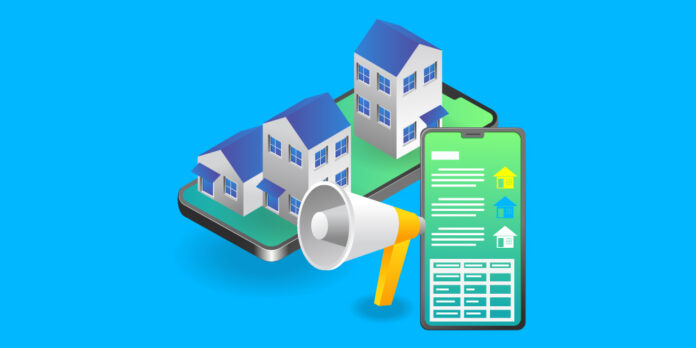Creating engaging content for property listings is crucial to attracting potential buyers or renters. High-quality listings not only inform but also captivate the audience, increasing the likelihood of a sale or lease.
Here’s a comprehensive guide on how to create compelling and engaging content.
1. Understand Your Audience

Before writing, it’s essential to understand who you’re targeting. Are you speaking to first-time homebuyers, luxury real estate investors, families, or young professionals? Knowing your audience helps you tailor your content to meet their specific needs and interests.
For example, integrating promotional products for property managers, swag, or giveaways into your strategy can be a unique way to engage different groups. Resources on property listing strategies can provide insights into what various demographics value, helping you craft more appealing listings.
Identify Preferences
Market research can reveal what your target audience prioritizes in a property. Families might look for good schools and safe neighborhoods, while young professionals may prefer modern amenities and easy commutes. Including elements like promotional products or swag in your offerings can further attract and delight these groups, enhancing their experience.
Use the Right Tone
Match your tone to your audience. For luxury properties, a sophisticated and polished tone works best. In contrast, listings for starter homes can adopt a more casual and friendly tone. Mentioning giveaways or special promotions in your listings can also create excitement and draw in potential buyers, making your content more engaging and memorable.
2. Craft a Compelling Headline
The headline is the first thing potential buyers will see, so make it count. A great headline should be concise, informative, and intriguing.
Be Specific
Include key features such as the number of bedrooms, type of property, and location. For example, “Spacious 3-Bedroom Apartment in Downtown with Stunning Views” is more engaging than “Nice Apartment for Sale.”
Use Descriptive Adjectives
Words like “luxurious,” “cozy,” “modern,” and “charming” can add appeal. However, avoid overuse to maintain credibility.
3. Write an Engaging Property Description

A well-written description should paint a vivid picture of the property, highlighting its best features and creating an emotional connection with the reader.
Start with a Strong Opening
Begin with a sentence that captures the essence of the property. For instance, “Experience urban living at its finest in this modern loft located in the heart of the city.”
Highlight Key Features
Focus on unique selling points such as architectural style, recent renovations, high-end appliances, or exceptional views. Be specific and detailed.
Create a Narrative
Tell a story about the property. Describe how it feels to live there, the lifestyle it offers, and the experiences one can have. For example, “Imagine waking up to panoramic ocean views, enjoying coffee on your private balcony, and unwinding in the evening with a stroll along the beach.”
Include Practical Information
Don’t forget to provide essential details like square footage, number of bedrooms and bathrooms, lot size, and any additional features such as a garage, pool, or garden.
4. Use High-Quality Photos and Videos
Visual content is a critical component of property listings. High-quality images and videos can significantly enhance the attractiveness of a listing.
Hire a Professional Photographer
Professional photos can make a substantial difference. Ensure the property is well-lit, clean, and staged before the photoshoot.
Showcase Different Angles
Include wide-angle shots of each room, close-ups of unique features, and exterior views. Highlight special areas like the kitchen, living room, master bedroom, and outdoor spaces.
Include a Virtual Tour
A virtual tour or video walkthrough can provide a more immersive experience, allowing potential buyers to explore the property remotely.
5. Incorporate Virtual Staging

Virtual staging can help buyers visualize how they could furnish and decorate the space, especially if the property is vacant.
Use Virtual Staging Software
There are various tools available that can add furniture, decor, and other elements to photos of the empty property. This can make the listing more appealing without the cost of physical staging.
Highlight Potential
Show different styles and arrangements to appeal to a broader audience. This can help potential buyers see the versatility of the space.
6. Optimize for SEO

To reach a wider audience, your property listing should be optimized for search engines.
Use Relevant Keywords
Incorporate keywords that potential buyers are likely to search for, such as “luxury condos downtown,” “family homes near schools,” or “affordable apartments in [City].”
Write Meta Descriptions
A well-crafted meta description can improve click-through rates. Summarize the key features and benefits of the property in a compelling way.
Include Alt Text for Images
Describe each image with relevant keywords. This not only helps with SEO but also makes your listing more accessible.
7. Highlight the Neighborhood
The location is often just as important as the property itself. Provide information about the neighborhood to give potential buyers a sense of the area.
Describe the Surroundings
Mention nearby amenities such as parks, restaurants, shopping centers, and public transportation. Highlight any unique aspects of the neighborhood.
Provide Local Insights
Share information about the community, including schools, safety, and lifestyle. Testimonials from current residents can add a personal touch.
8. Use Clear and Concise Language
While it’s important to be descriptive, avoid overwhelming the reader with too much information or overly complex language.
Be Direct
Use straightforward language and short sentences. This makes your listing easier to read and understand.
Avoid Jargon
Steer clear of real estate jargon that might confuse potential buyers. Instead, use simple, everyday language.
9. Include a Strong Call to Action

Encourage potential buyers to take the next step with a clear and compelling call to action.
Be Specific
Direct the reader on what to do next, whether it’s contacting an agent, scheduling a viewing, or visiting a website for more information.
Create Urgency
Phrases like “Don’t miss out on this opportunity” or “Schedule a viewing today” can create a sense of urgency and prompt immediate action.
10. Review and Edit
Finally, review your listing carefully to ensure it is free of errors and presents the property in the best possible light.
Proofread
Check for spelling and grammar mistakes. A polished listing reflects professionalism and attention to detail.
Seek Feedback
Ask colleagues or friends to review the listing. They may catch errors you missed or suggest improvements.
Conclusion

Creating engaging content for property listings involves understanding your audience, crafting compelling headlines and descriptions, using high-quality visuals, and optimizing for SEO.
By following these guidelines, you can create listings that attract and captivate potential buyers, ultimately leading to successful sales or rentals. Remember, a well-crafted property listing not only informs but also inspires, helping potential buyers envision their future home.







